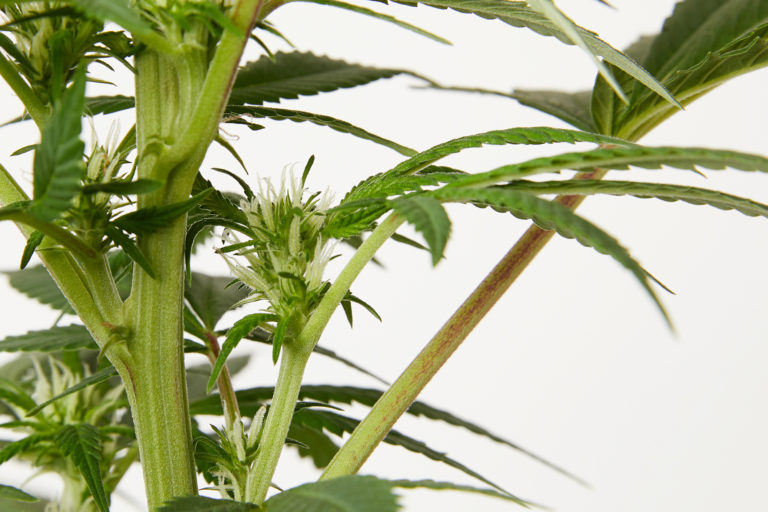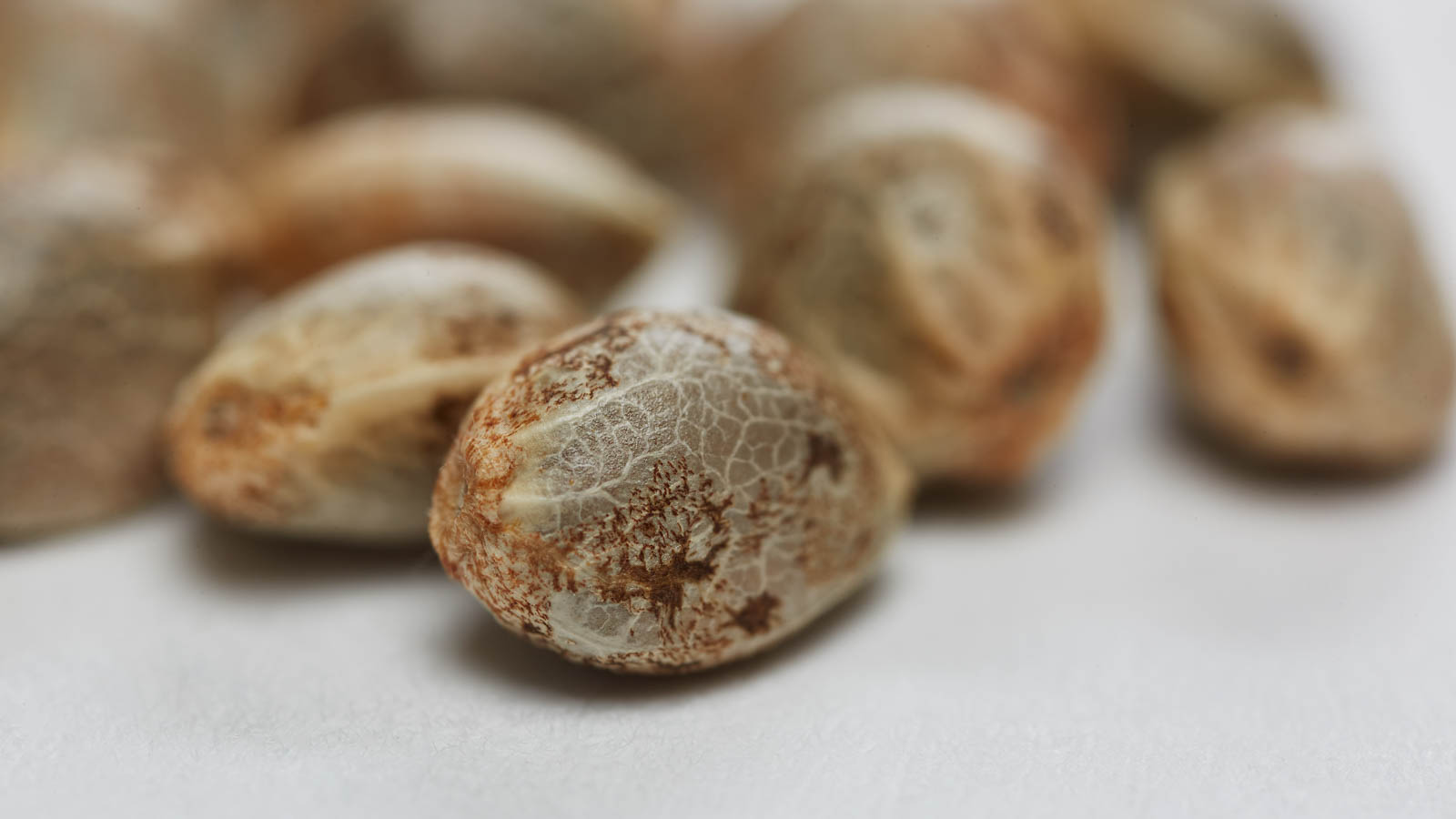The process of crossing plants to produce desirable traits. In what has become the backbone of the cannabis industry, breeding and the terminology that surrounds it warrant a closer look to inform consumers.
“Breeding cannabis is a long, iterative process.”
“The strain Cali-O is used as breeding stock for many citrus-tasting strains.”
More about breeding
To understand breeding, knowing the mechanics of plant reproduction is necessary. Cannabis has a diploid genome, meaning that it has two copies of each chromosome, where genes are found. During breeding, a male and female plant are crossed with each other allowing each to contribute genetic information to their offspring.
One copy of each parent plant's chromosome is supplied by that plant's sex cell — pollen in male cannabis plants and ovule in female cannabis plants. These cells combine during reproduction, mixing genes from one parent's chromosome to areas on the other parent's chromosome in a process called recombination.
 Photo by: Gina Coleman/Weedmaps
Photo by: Gina Coleman/WeedmapsImage lightbox

The recombination of genetic material from each parent plant during breeding is highly favorable for the fitness of future generations. It allows for genetic material to become clustered in one area on the chromosome, which in turn makes it easier for these traits to be selected for, or removed in future offspring.
This potential to increase beneficial traits that support the organism's survival makes breeding advantageous for the longevity and health of a lineage, which may result in a better-adapted cultivar, or strain.
Why is breeding useful?
This complex interplay of selection for desirable traits requires a great deal of time, effort, and resources by the breeder. Cannabis breeding as practiced today began in the 1970s. From the outset, one of the main goals of breeding was to increase the potency of cannabis, which started at out merely 3 -5% of THC by mass. Cannabis potency has steadily increased to 17-25% ine modern strains, but other traits have been harder to acquire. Modern breeders seek unique aroma to make their product stand out among the competition. T]raits that favor resistance to pests are sought as mold and insects adapt to feeding on cannabis.
The iterative process of breeding happens over generations. A plant that has a shorter flowering time but is vulnerable to pests could be crossed with a plant that has reputable resistance to a variety of pests. The first generation of offspring produced from an initial cross between two strains are called F1 hybrids; some may display better pest resistance than others. The plants can then be crossed again with the goal of increasing these traits further, producing a second generation, or F2 hybrids.
This process can be repeated, utilizing the best plants from each generation to selectively fix these traits. A breeder can infer that traits are fixed in their hybrid line after rounds of cross-breeding the best male and female hybrids from each crop when subsequent generations do not differ in presentation of targeted traits seen in earlier generations. At this point, the genetics of the hybrid line are considered stable and should produce plants identical to the stabilized hybrid parents.
Once genetics have been stabilized in a strain, their seeds can be sold to individuals looking to grow a similar crop. However, these individuals often live in very different climates, which can affect the outcome of the crop. Initially, the seeds are simply grown in the new climate. Of those newly grown plants, the ones that displayed better adaptation to their environmental conditions will be crossed with each other to produce seeds that yield the greatest acclimation to their new environment.
Types of breeding
To align with a grower's goals for the final product, two types of breeding are utilized: inbred lines and hybrid lines.
Inbred lines
So-called true inbred lines are the result of a large population of plants from the same strain being crossed with one another. This form of breeding homogenizes favorable traits but decreases genetic diversity, as all generations will be related to one another. Selfing, the most extreme form of inbreeding, occurs when a plant pollinates itself, producing offspring with identical genetics.
These methods of inbreeding have little or no recombination, often resulting in the lineages becoming less vigorous over time, the result of which is often referred to colloquially as “stale genetics.” Outbreeding and backcrossing, as explained below, are other types of breeding methods that can reintroduce diversity and vigor to these lines.
Durban Poison, a popular strain available in many dispensaries, is an excellent example of an inbred line with homogenous traits. The characteristically sweet aroma of this strain is well-represented when comparing any two bags or extracts of this strain.
Hybrid lines
In the case of outbreeding, true inbred lines with favorable traits but markedly less vitality can be crossed with one another to produce a hybrid line. Hybrid lines allow for recombination of vastly different genetic information, which in turn increases genetic diversity and the health of the lineage, a quality often referred to as hybrid vigor. Unfortunately, the F1s may exhibit some of the parents' traits but not to the same degree, or they may showcase new, unwanted traits. Backcrossing, breeding the F1 generation with the parental plants, can be used to strengthen the parental traits in the more diverse hybrids.
Tangie is another popular, widely available strain that is an example of a hybrid line. Bred from a cross of Cali-O and Skunk by Crockett Family Farms, this strain is widely sold by the seed company DNA Genetics. Growers who purchase these seeds often note the wide variety of phenotypic traits, such as varying heights and leaf shapes, resulting from one bag of seeds that all share the same Tangie genotype. Despite their differences, the characteristic tangerine aroma will be common to all of these plants.

